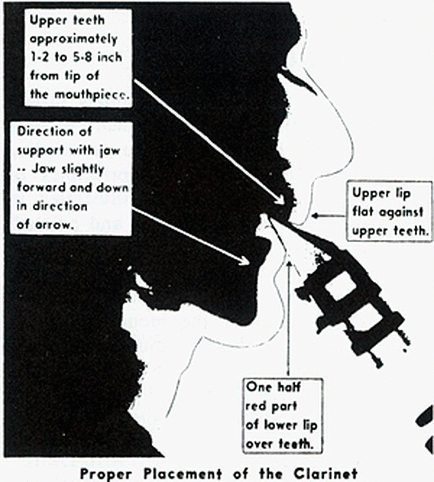|
Here is another fantastic album to check out. This one is not a clarinet album, but rather a great Ethiopian band. Mistakes on Purpose is the newest album by Girma Bèyènè. It is full of energy and grit and is an absolute joy to listen to. Coupled with the mean bass clarinet and bari sax work on the album, it's really great to listen to.
Check it it out here.
2 Comments
Let's start the recommendations with this sublime album by Clarinetist Jon Manasse, pianist, Jon Nakamatsu, and the Tokyo String Quartet. It is simply a fantastic album all around. Being a clarinet player, I am most impressed with Jon Manasse. His playing is effortless, and full of emotional depth. Jon makes such a beautiful and consistent sound throughout the range of the clarinet that it can make you forget just how difficult that is to do on an instrument. His tone is also incredibly pure. If you happen to have a good stereo, or a nice set of headphones, you will hear no production noise in his sound. I have sat next to Jon in lessons, and I can tell you that he sounds like that in real life too. His sound is absolutley pure.
The Tokyo String Quartet also does a wonderful job with the piece. Their precision and intonation is excellent, giving Jon a wonderful ensemble to partner with on this pillar of the repertoire. The dynamic range of a great string quartet is always astounding to hear live. Not just the near silence that they are capable of playing with, but the power as well. Tokyo delivers all around. This is a great recording. As a human, you need to know the Brahms Quintet, Op. 115. If you are going to listen to it, it might as well be a truly amazing recording. It is available widely, as well as on SACD, which I highly recommend if you have an SACD player. Almost constantly, I have people I meet ask me what I am listening to these days. I suppose, since I am a professional musician, people think I have the inside track on all the good tunes. This isn't really the case, but I'm happy to pass along some reccomendations to anyone who wants them. In the coming weeks, I'll post recordings that I love that are absolutley worth a listen. Some will be clarinet-centric albums, some will not. My tastes are diverse, and yours should be too. There is simply too much great music out there.
I was recently asked to answer a few questions over email by a student at the Crane School of Music in Potsdam, NY. It occurred to me that more people might be interested in the answers, so here they are.
Q. I am currently preparing the bass clarinet excerpt from Daphnis and Chloe. How would you go about preparing such a difficult excerpt? A. Very slowly. Make no mistakes in your practice, no matter how slowly you must play in order to do so. Speed will come. Q. How do you practice? A. Slowly, and usually very early in the morning. It's tough to get any effective practice done after 3-6 hours of band and chamber music rehearsal. Q. How did you get to where you are now? A. I practiced a lot, and worked on staying calm in auditions. At the time I won my audition, I was doing zen meditation as part of my practice. I found it really helped me focus. Q. How do you remain calm during an audition? A. The only time I am nervous during auditions is when I am unprepared. I recently took an audition right after my second daughter was born. Needless to say, I was unprepared. It was the most nervous I have ever been in an audition. Q. What steps do you take in order to prepare for a major audition? A. I like to make a big book with all of the music, and record myself a lot. I also listen to as many recording as possible of the clarinet players in the section. If possible, find some chamber music recordings as well. I really try to get to understand what they are after and do that myself. Q. Have you ever had any problems preventing you from practiced and performing, like tendonitis? What did you do to fix these problems and avoid them in the future? A. I had a bit of tendonitis in college. I started using a BG neck strap and it cleared up. The strap causes other issues, but as long as you are aware of them, it's fine. I try and stay as relaxed as possible, both in my embouchure and my hands. It's not always possible, but it helps. Q. Do you have any recordings you would recommend listening to while preparing for auditions? A. I usually just try and listen to the ensemble I am auditioning for to see what they really sound like. It's not all that helpful if you can't find anything current though. A recording from 20 years ago is not really going to help all that much. Also, I try and listen to recordings of great players. For example, there are a ton of great recordings of Don Quixote from a cello standpoint, but the bass clarinet playing can be a bit lacking depending on the orchestra. I usually try and find one that Lawrie Bloom is playing on and it is usually fantastic.  For years now, I have been working to make my Bb clarinet embouchure more stable. It is a difficult undertaking that demands a lot of patience. Switching to bass clarinet regularly only makes maintaing a truly solid Bb clarinet embouchure even more difficult. On top of that, it can be tough to find time to do maintenence when working as a professional clarinetist. The rigors of learning music for performances and attending rehearsals often leave my chops pretty toasted. Over the weekend I stumbled across an article written by Lucinda Lewis, a French horn player in the New Jersey Symphony Orchestra. The article talks about “Embouchure Overuse Syndrome,” how it is caused and how to fix it. The article is aimed entirely at brass players, but I did manage to pull some very useful information from the article. First, it is worth noting, that Ms. Lewis is not a medical doctor, and her claims seem to be largely conjecture, and are not the result of any scientific study. Here is an excellent rebuttal to Ms. Lewis’ claims. I’m not convinced that embouchure overuse syndrome is a real thing, nor am I convinced that it can be achieved in a clarinet player. I do believe that as clarinetists, we can make small changes in our embouchures over time to overcome equipment deficiencies, or other bad habits. For example, I currently play a Buffet Festival Bb clarinet. The instrument is designed with a slightly higher register tube vent than a standard R13. As a result, the notes from clarion A to C are on the low side. Over the past year, I have increased my embouchure pressure while playing in that region of the instrument. It’s not something I decided to do, but that is the easiest way to bring those notes up to pitch, so I did it without making a conscious decision to do so. (Update: I’m now playing an RC Prestige) After reading Ms. Lewis’ article, I got an idea for an embouchure exercise that has helped me tremendously. She suggests blocked buzzing for brass players, where the player buzzes on the mouthpiece alone, then covers the entire end of the mouthpiece with their hand to completely stop the flow of air. This lets the player completely concentrate on forming the embouchure and provides very few variables to get in the way. I adapted this to Bb clarinet with excellent results. To do this on clarinet, take the mouthpiece, with reed attached and barrel off of the instrument. Sit or stand in ideal playing posture in front of a mirror. Take a deep breath, expanding your stomach as you do so. Form your embouchure around the mouthpiece. Completely cover the end of the barrel with the palm of your hand. Support your air with your diaphragm and blow. No air should escape, especially not from your embouchure. Concentrate on the different aspects of your embouchure as you hold it. First on your top lip, be sure it is rounded and pressing firmly into the mouthpiece. Next ensure your corners are pointed either down or into the mouthpiece. Next, concentrate on your chin, is it flat? How is your bottom lip? Last, ensure you are not using your teeth as an integral part of your embouchure. This is a very zen-like exercise. I tend to concentrate on one aspect of my embouchure for 30 seconds on the metronome, then take a breath and repeat with the next part of my embouchure. The goal is to remind yourself exactly what this is supposed to feel like so that when you are in the thick of it in a concert, you can think about playing beautiful music, not making sure you have a firm top lip. For me, doing this exercise let me realize that I had switched to reeds that were too soft. I was in search of a free-blowing setup, but this does not allow me to form my embouchure the way I want to. I imagine everyone that tries this will have different results, but it is a great tool for doing a mental embouchure check. |
AuthorWrite something about yourself. No need to be fancy, just an overview. Archives
February 2017
Categories |

 RSS Feed
RSS Feed